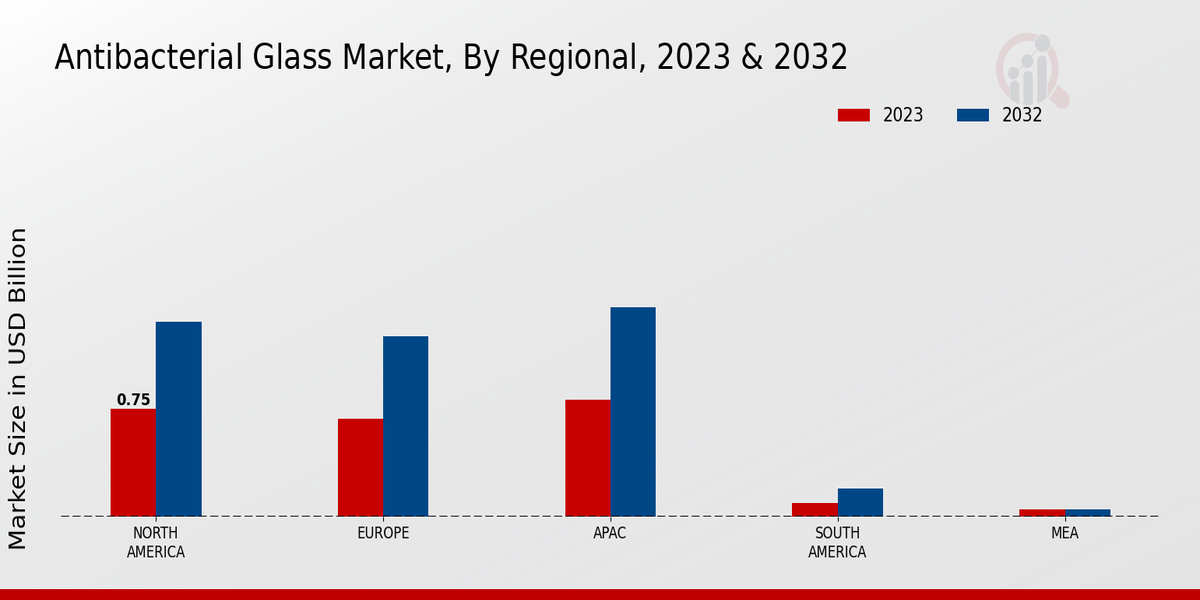Market Growth Charts
Market Growth Projections
The Global Antibacterial Glass Market Industry is poised for substantial growth, with projections indicating a market value of 2.74 USD Billion in 2024 and an expected increase to 5.97 USD Billion by 2035. This growth trajectory suggests a compound annual growth rate of 7.33% from 2025 to 2035. Such projections reflect the increasing integration of antibacterial glass in various applications, driven by heightened consumer awareness and technological advancements. The anticipated growth is likely to attract new entrants into the market, fostering competition and innovation. As the demand for safer and more hygienic materials continues to rise, the antibacterial glass market is expected to flourish.
Growing Demand for Hygiene Solutions
The increasing global awareness regarding hygiene and sanitation is driving the Global Antibacterial Glass Market Industry. As consumers become more health-conscious, the demand for materials that inhibit bacterial growth is surging. This trend is particularly evident in sectors such as healthcare, where antibacterial glass is utilized in hospitals and clinics to reduce infection rates. The market is projected to reach 2.74 USD Billion in 2024, reflecting a robust growth trajectory. This heightened focus on hygiene is likely to propel the adoption of antibacterial glass in various applications, including residential and commercial spaces, thereby expanding the market further.
Rising Applications in Diverse Industries
The versatility of antibacterial glass is contributing to its growing presence across various sectors, thereby impacting the Global Antibacterial Glass Market Industry. Applications range from healthcare facilities to consumer electronics, automotive, and architectural designs. For instance, antibacterial glass is increasingly used in smartphones and tablets to enhance user safety. This broad applicability is likely to attract investments and foster innovation, as companies seek to develop specialized products tailored to specific industry needs. The market's expansion is further supported by the increasing consumer preference for products that offer enhanced safety features, indicating a promising future for antibacterial glass.
Regulatory Support for Antimicrobial Products
Government regulations promoting the use of antimicrobial materials are bolstering the Global Antibacterial Glass Market Industry. Various health organizations advocate for the incorporation of antibacterial surfaces in public spaces to enhance safety and reduce the spread of infections. This regulatory support is evident in building codes and standards that encourage the use of antibacterial materials in construction and renovation projects. As a result, manufacturers are increasingly investing in antibacterial glass solutions to comply with these regulations, thereby driving market growth. The anticipated compound annual growth rate of 7.33% from 2025 to 2035 further underscores the positive impact of regulatory frameworks on this market.
Technological Advancements in Glass Manufacturing
Innovations in glass manufacturing technologies are significantly influencing the Global Antibacterial Glass Market Industry. Advanced techniques, such as sol-gel processes and ion-exchange methods, enhance the antibacterial properties of glass, making it more effective against pathogens. These technological advancements not only improve the performance of antibacterial glass but also reduce production costs, making it more accessible to a broader range of industries. As a result, the market is expected to grow, with projections indicating a value of 5.97 USD Billion by 2035. This evolution in manufacturing processes is likely to attract new players and stimulate competition within the market.





















